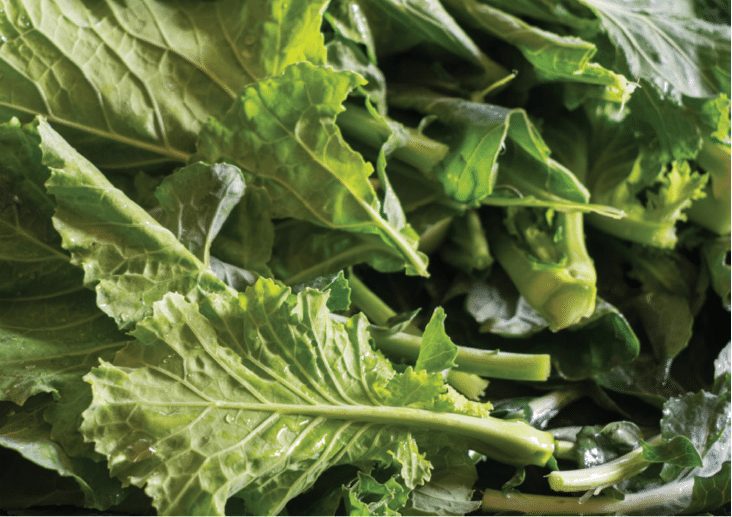What Are The Fastest Growing Vegetables
Consider sowing these crops that are ready to harvest in 60 days or less.
This past year increased many people’s interest in growing their food and growing food self-reliance.
If you’re among them, maybe growing food is part of your response to COVID-19, or perhaps you want to leap into spring.
Either way, you’re probably wondering what can bring the fastest results with early harvests.
Here’s information on some vegetable crops that offer fast returns and some sources for more details.
A note for newbies before reading: “Thinnings” are small plants pulled from a direct-seeded row that are removed to leave enough space for the selected ones to thrive and grow bigger.
The smallest thinnings (when you thin to about an inch apart) can be used for salads of baby greens, and the larger ones (when you thin to 3 inches) can be lightly cooked or included in a salad mix.
Ready in 30 to 35 Days
Baby kale, collards, mustard greens, radishes, spinach, chard, baby salad greens (lettuce mix, endives, and chicories), arugula, and winter purslane are all vegetables that thrive in spring.
Beet greens derived from thinnings can be cooked and eaten like spinach. It’s possible to sow rows of almost any type of greens and cut them with scissors for a salad once they’re 3 to 4 inches tall.
Snag a handful and cut about an inch off the soil. In cold weather, you can get a second cut (maybe even a third), but once it’s warm, they’ll produce tough flower stems rather than juicy leaves.
Avoid growing turnips and radishes this way, as many of them have prickly leaves that are unpleasant to eat.
Ready in 40 Days or Less
Multiple Asian greens, such as Chinese napa cabbage; ‘Komatsuna’; ‘Mamba Santoh’ ‘Mizuna’; bok choy; ‘Senposai ‘; ‘Tatsoi ‘; ‘Tokyo Bekana’; and ‘Yukina Savoy’ are fast-growing.
There’s a vast range of attractive cultivars that are better at germinating in hot weather and faster-growing than lettuce-a diversity of crops without a variety of growing methods!
Flavors vary from mild to peppery, and colors cover the spectrum: chartreuse, bright green, dark green, and purple, to name a few.
Transplant 4 to 5 weeks after spring sowing, or direct-sow. Most of these greens reach a baby size in 21 days and full size in 40 days. Grow them when you usually grow kale.
Asian greens sown in spring will sprout as soon as the weather warms up, so be prepared to harvest a lot at once (if you planted a lot, that is).
One summer, we sowed ‘Tokyo Bekana’ at Twin Oaks Community as a lettuce substitute, and it took 20 days to grow to baby size and 45 days to full size.
We’ve also grown this at other times of the year when faced with a space we hadn’t planned for.
‘Mizuna’ and other frilly mustards are easy to grow, and they tolerate cold, wet soil to 25 degrees Fahrenheit.
Also, they’re relatively heat-tolerant (well, warm-tolerant). Use for baby salads after 21 days, or thin to 8 to 12 inches apart to grow to maturity in 40 days.
Mild-flavored ferny leaves add loft in salad mixes and re-grow quickly after cutting.
Ready in 35 to 45 Days
Early carrots (thinnings or the whole row), turnip greens (more thinnings!), endives, corn salad, land cress, sorrel, parsley, chervil, and some of the smaller turnip roots can be ready in 45 days or less.
Read the small print on your favorite nursery’s website or catalog for help in choosing the best cultivars.
Those that are ready in the fewest days are more likely to give the fastest results. Also, keep the soil surface damp to keep the seedlings alive and multiplying.
Ready in 60 Days
Beets (‘Cylindra’ ), dwarf snap peas (‘Sugar Ann’), broccoli, collards, kohlrabi (‘Early Vienna’ ), turnips, and small, fast cabbages ( ‘Farao,’ ‘Gonzales,’ ‘Stonehead,’ ‘Fast Ball,’
‘Golden Acre,’ ‘Savoy Express,’ or ‘Early Jersey Wakefield’) are all ready to be harvested 60 days after sowing.
Ready 50 to 60 Days
After Last Frost, Zucchini, yellow squash, bush beans, and small cucumbers can proliferate.
Make succession plantings every few weeks throughout summer until around two months before the first frost date.
The speed of growth will speed up in summer so that later plantings will yield in less
time than earlier ones.
Garlic scallions can be grown over winter but will grow more quickly in spring, taking perhaps eight weeks.
Plant scrappy little garlic cloves unsuitable for cooking in close furrows, and wait until the leaves are 7 inches tall before digging up the plant.
You can prepare them like spring onions, and they can be eaten raw, but more often, they’re cooked.
You may also plant whole bulbs without splitting the cloves. This is a smart use for extra bulbs already sprouting in storage and excellent service for small spaces between other plants, mostly since garlic repels some pests.



























Comments are closed.